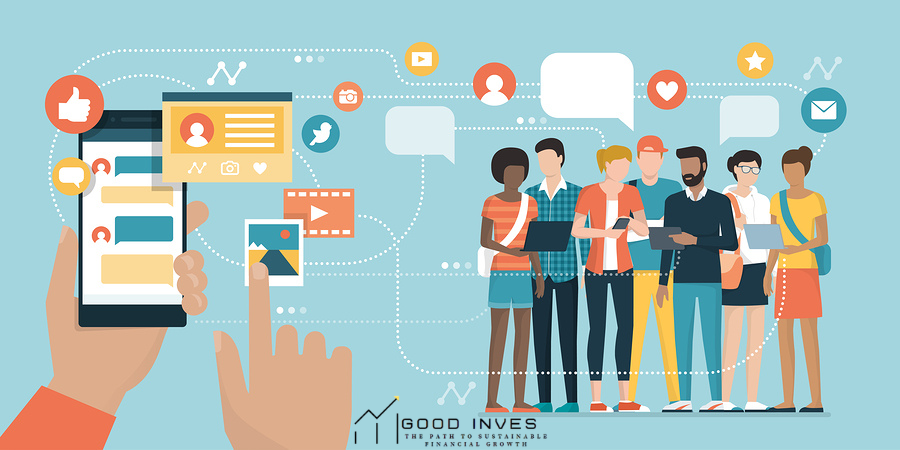Email marketing is key for brands to get their messages out. It’s important to get how smart buyers think today. And, making emails more personal helps get and keep their attention. Statista says the world will have 4.6 billion email users by 2025. So, using tech like AI and machine learning is the way forward. This lets brands send more custom emails and run better campaigns.
- High-volume email marketing lists can be expensive for small business needs.
- Personalizing emails is not just about using someone’s name. It’s about knowing what they like and need.
- Email marketing’s future is hyper-personalization. This means really customizing email content for each person.
- Interactive emails are set to boost customer interest and make them more likely to click. This includes videos and clickable buttons.
- Good stories in emails can really work wonders for your marketing. They make people care and want to be part of your brand’s story.
Key Takeaways:
- By 2025, email marketing will likely have 4.6 billion users. This shows how big its impact is.
- Personalizing emails is about more than just the name. It’s learning what each person likes and making emails just for them.
- The path ahead for email marketing is in personalizing content deeply. This helps really engage with the reader.
- Using videos and features like clickable buttons can make more people react to your emails. This can boost how many people visit your site or buy your product.
- Telling great stories in your emails can really make a difference. It lets your brand speak to people’s hearts, not just their minds.
The Role of Machine Learning, AI, and Cloud Technology in Email Marketing
Machine learning, AI, and cloud tech have changed email marketing. They let marketers send more personalized emails. This is by using data to shape emails based on the customer’s activities and preferences.
Thanks to these advancements, engagement and conversion rates improve. People are more likely to click on emails made just for them.
AI is also key for following strict data privacy rules like the GDPR. By helping to manage data, AI tools keep personal info safe. This builds trust with customers, who are increasingly worried about their data security.
Cloud tech makes email marketing cheaper and more scalable. Services like Brevo and Zoho Campaigns offer easy-to-use tools for small businesses. They allow for the efficient sending of personalized emails to a target audience.
The Future of Email Marketing with ML, AI, and Cloud Technology
Email marketing’s future is all about hyper-personalization. Basic personalized emails are not enough anymore. We need to go further by offering emails that are truly unique to each customer.
Interactive emails are becoming more popular, too. They include things like videos and clickable buttons. This makes emails more fun to read and increases customer interaction. It can also lead to more sales and a stronger brand connection.
“Machine learning, AI, and cloud technology are transforming the email marketing landscape, enabling marketers to deliver personalized and targeted messages to their audiences.”
Stories are now a big part of email marketing. Brands are using stories to connect with customers. Sharing tales can make a brand more memorable and trustworthy.
User-generated content is also on the rise. Adding reviews and testimonials in emails increases trust. People like seeing what others say before making a purchase.
While these technologies are great, we mustn’t forget about privacy. Marketers need to follow data rules closely. By respecting customer data, brands build stronger connections and trust.
In short, machine learning, AI, and cloud tech are making email marketing better. Marketers who use these tools in smart ways will lead the charge in offering great email experiences.
The Importance of Personalization in Email Marketing
Personalization is crucial in email marketing. It’s not just about using someone’s name. It means sending emails that match the receiver’s website visits, likes, and habits. By doing this, marketers can make emails that people really want to read. This can boost how many people actually open the email and take action.
Looking ahead, we see hyper-personalization as the next big step. This method asks subscribers about their preferences from the start. So, they get emails tailored just for them, meeting what they like and need exactly.
Why is personalization key in email marketing, you might ask? First, it makes emails more likely to connect with people, pulling them in with what they care about. It also makes them feel special, building a better bond with the company. Second, it amps up a marketing campaign’s power, leading to more clicks and more sales. Sending the right content to the right person means they are more likely to act upon it.
Marketers can use fancy tech like AI and machine learning to up their personalization game. These tools help gather and understand data on what users do, allowing for even more specific emails. Whether it’s reminding someone about an abandoned shopping cart or sending a birthday message, these tools do it automatically, at large scales.
“Personalization in email marketing is not just about addressing recipients by name. It’s about understanding their preferences and behaviors to deliver targeted, relevant content that drives engagement and conversions.”
Adding user-generated content (UGC) can also boost personalization. UGC, like reviews, makes emails feel real and trustworthy. It shows off how other customers feel about a product, helping new ones make a decision.
Understand, though, that privacy matters in personalization. Brands need to keep up with rules such as GDPR and CCPA. This ensures customers know their data is safe and used right. Trust is crucial for any lasting relationship.
At its core, personalization makes or breaks email marketing. It’s how brands connect and stand out. The right tools, like smart email software, are crucial. These include segmentation and maintenance features. With them, getting personal, in a good way, becomes easier and more effective.
| Email Marketing Statistics | 2022 |
|---|---|
| Number of global email users | 4.3 billion |
| Average open rate for all industries | 29.7% |
| Return on investment (ROI) | $36 for every dollar spent |
| Percentage of consumers who expect personalized interactions | 71% |
| Percentage of successful email marketers who believe personalization is crucial for improving engagement | 60% |
| Percentage of marketers who find generative AI for email creation effective | 95% |
The Rise of Interactive Emails
Email marketing keeps changing, and interactive emails are a big trend. These emails are like mini websites in your inbox. They use videos, interactive buttons, and messages to engage the reader. This helps get more clicks and sales for brands.
“Interactive emails have become an effective way for brands to stand out in crowded inboxes and create memorable experiences for their subscribers.”
As technology gets better, making interactive emails is easier. This means brands can make emails that look great and are fun to use. People can interact with the content in new ways.
AI makes interactive emails even more powerful. It lets brands use dynamic content, like user reviews, in emails. Stories can be more interesting, and emails feel more personal. This builds trust and loyalty with customers.
The Benefits of Interactive Emails
Interactive emails beat old-style marketing in a few ways:
- They grab more attention, leading to better engagement.
- They can drive more people to click on links, boosting traffic.
- Users enjoy them more, which can mean more sales for brands.
- Brands learn what users like, making emails more personal in the future.
The Future of Email Marketing
Email marketing is heading towards even more interaction. With new tech, emails will be cooler and more fun. Things like games and custom product suggestions could become common.
Using interactive emails can really help brands. They make your emails shine and make your audience trust you more. As technology grows, being interactive in emails will be key to success.
The Power of Captivating Storytelling in Email Marketing
Storytelling is an essential tool in email marketing. It captivates your audience and helps build a strong connection with your brand. Using captivating stories highlights your emails and makes them memorable.
Email newsletters are a great way to communicate about your business. They share vital information and updates with your audience. This helps position you as an expert in your field and keeps your readers interested.
Sharing narratives about your company’s culture and future plans is crucial. It creates a sense of journey and showcases your values. These actions build a stronger bond and trust with your audience.
Storytelling works really well in business-to-business marketing. Email newsletters are known to be very effective in this setting. They can be almost three times better at nurturing leads than other types of content.
Did you know? 41% of B2B buyers rely on vendor emails when making purchasing decisions.
Knowing how to use storytelling can make your emails more effective. It’s about evoking emotions and addressing the needs of your audience. This approach encourages them to take action.
Personalized stories are even more impactful. They cater to the specific interests of your audience. This makes them feel more connected and responded to.
Using visuals like images and videos is also key. They make your emails more engaging and memorable. Good content draws readers in and keeps them interested.
Measuring your storytelling’s impact is vital. Track your email’s performance through metrics like open and click rates. This data shows you how effective your storytelling is. It also helps in improving future campaigns.
To wrap up, using engaging storytelling can transform your email marketing. It not only involves your audience but also deepens their loyalty. This leads them to interact more with your brand.
Leveraging User-Generated Content in Email Marketing
User-generated content (UGC) is a strong tool in email marketing. It lets brands share customer joy and influence buyers. When UGC appears in emails, it shows real people like and use the brand. This boosts trust and can lead to more sales.
Brands get UGC by asking customers for reviews and photos. They can put these in emails. This makes the brand feel more real to new customers. It also makes the brand look trustworthy.
Brands can use UGC in many ways in emails. They might use testimonials, photos, or customer stories. This creates a feeling of a shared community and shows the brand cares about its customers.
It’s important to reply to all reviews, good and bad. This shows the brand is serious about customer service. It helps keep the brand’s image positive and promotes loyalty.
Using UGC in emails has many benefits. It boosts interest and sales. It also makes the brand seem more real and trustworthy. This way, brands connect better with their customers through the genuine voices of others.
| Benefits of Leveraging User-Generated Content in Email Marketing | |
|---|---|
| 1. Social Proof | By including UGC, brands show that real people endorse their products or services, adding credibility. |
| 2. Authenticity | UGC adds an authentic touch to marketing emails, connecting new prospects to the experiences of existing customers. |
| 3. Trust and Confidence | By showcasing positive reviews and testimonials, brands enhance trust and encourage potential buyers to convert. |
| 4. Community Building | By featuring user-generated stories or images, brands create a sense of community and foster a deeper connection with their audience. |
| 5. Reputation Management | Responding to online reviews, both positive and negative, demonstrates a brand’s commitment to customer satisfaction and helps in managing reputation. |
Prioritizing Data Privacy in Email Marketing
Keeping data private in email marketing is now more important than ever. People are worried about how their data is used. By focusing on keeping data safe, companies can earn trust, follow the rules, and make their customers happier.
Laws like the GDPR and CCPA are here to protect our data. Brands have to follow these rules to keep everyone’s info safe. Making sure emails match these laws saves from penalties and keeps trust strong.
Using cookies was once a big deal for marketing, but things are changing. About half the internet is moving away from them. This means marketers need to find other ways, like using what customers directly tell them, for more accurate ads.
Customers worry a lot about privacy online. A study found that many Americans feel like they’re always watched online. And more than half have said no to a product because of privacy worries. So, dealing with these fears in email marketing is super important.
How can brands make email marketing more private? They can start by following a few steps:
- First, they must follow all data protection laws like the GDPR and CCPA. This means getting correct permission, being clear with people, and letting them choose.
- Next, they should make sure customer data is very secure. They should tell customers about the steps taken to keep data safe.
- Then, they need to be open about how data is used and give clear choices for stopping emails. This lets people decide what they want to hear about.
- Finally, keeping privacy policies up to date is key. They should always tell people how their data is handled and what their rights are.
By making privacy a big deal in email marketing, companies can do a lot. They can earn more trust, follow the law better, and make stronger bonds with their audience. It doesn’t just protect data, but shows real care for customers’ privacy.
The Impact of Data Privacy Regulations
Privacy laws like the GDPR and CCPA are here to give us more control over our data. They’ve changed how marketers can use, store, and share information.
“The rise of data privacy regulations has forced brands to be more transparent and accountable in their data practices. It has created an opportunity for marketers to reassess their strategies, prioritize data privacy, and build stronger relationships with customers.”
Following these privacy rules is a chance to do better in marketing. Companies that value privacy can send emails that really speak to their audience, leading to better responses and loyalty.
Data Privacy in Email Marketing: Best Practices
Using the best practices in email marketing privacy is essential. It helps build trust and keep things legal. Here’s what companies should do:
- Explicit Consent: Ask for clear permission from subscribers before sending them emails. Tell them exactly why you need their data and what you’ll do with it.
- Privacy Policies: Clearly state how you handle and protect customer data in your privacy policies. Make sure they’re easy to find and understand.
- Secure Data Storage: Protect customer data with strong security measures. Use encryption and regular backups to keep it safe from harm.
- Data Minimization: Only collect the data you actually need. Don’t ask for too much, just what’s necessary for your marketing.
- Preference Centers: Let subscribers choose what emails they receive. Make it simple for them to update their info or opt out when they wish.
- Email Authentication: Use authentication methods like SPF, DKIM, and DMARC to stop email impersonation. This protects your brand and your customers.
Following these tips helps companies protect their customers’ trust. It ensures a good experience for everyone who gets their emails.
Data Privacy Compliance: Not Just a Legal Requirement
Following data privacy laws isn’t just about avoiding legal trouble. It also brings big benefits to your marketing. For one, it:
- Builds Trust: By showing you care about privacy, you can win your customers’ trust. This leads to better relations with your audience.
- Enhances Reputation: A strong stance on data privacy makes your brand look better. It shows you’re responsible and trustworthy. This attracts and keeps customers.
Being serious about data privacy matches what customers want today. They choose companies that value their privacy. So, by making privacy important, your brand can stand out and do well in email marketing.
Data Privacy Statistics: Insights into Customer Concerns
| Statistic | Percentage |
|---|---|
| Marketers considering third-party cookies very important | 51% |
| Americans feeling tracked by advertisers or tech firms | 72% |
| Americans deciding not to use a product or service due to privacy concerns | 52% |
| Worldwide internet users aged 16-64 using ad blockers | 37% |
| Worldwide internet users aged 16-64 using VPNs | 28.3% |
| Effective date of California Consumer Privacy Act (CCPA) | January 2020 |
| Effective date of California Privacy Rights Act (CPRA) | December 2020, with full protections from Jan. 1, 2023 |
| Effective date of General Data Protection Regulation (GDPR) | May 2018 |
| Effective date of Lei Geral de Proteção de Dados (LGPD) | Enacted in 2018, provisions effective from late 2020 |
| Effective date of China Personal Information Protection Law (PIPL) | November 2021 |
These stats show why focusing on data privacy in email marketing is so vital. Understanding and meeting customer concerns, along with staying on top of legal requirements, helps companies make stronger connections. This is essential in today’s privacy-focused world.
Email Marketing Statistics and Trends for 2022 and Beyond
Email marketing is a key tool for brands worldwide with billions using it daily. Looking forward to 2022 and beyond, knowing the latest statistics and trends is crucial. These insights and data will shape the future of email marketing. They can help your campaigns succeed.
Email Marketing Statistics:
- Nearly 1/3rd of marketing departments use generative AI, and 95% see its value to create emails.
- “Generative AI” search interest has shot up by 9,100% in two years. This shows more people are into AI for email marketing.
- 72% of subscribers join newsletters to keep updated or learn interesting topics. It shows that making content relevant and engaging matters a lot.
- MailChimp’s study reveals that targeted emails have 14% more opens and 100% more clicks. So, segmenting your audience and sending tailored content is vital.
- 62% of emails are opened on mobiles. Therefore, it’s essential to design emails that look good and work well on mobile devices.
- Putting an emoji in your subject line can boost open rates by 56%. It’s an effective way to catch people’s eyes.
- The average email open rate is 19.7%. This underlines how crafting great subject lines and content can boost your open and engagement rates.
Email Marketing Trends:
- The use of AI to personalize emails is growing, with 32% of marketers using it. This strategy helps improve personalization and campaign results.
- Adding videos in emails can up click rates by 300%. This trend is helping brands make their emails engaging and interactive.
- About 16% of the world has a form of disability. This is pushing brands to make their emails more accessible for everyone, leading to better campaign results.
- Email marketing brings in $36 for every dollar spent. This high ROI makes it a smart choice for businesses looking to invest.
- 60% of successful email marketers find personalization very important for engagement. It helps build stronger connections and higher conversion rates.
The stats and trends show how email marketing can really work for businesses. By staying up to date and using the right strategies, businesses can boost revenue, gain and keep customers, and connect well with their audience.
| Email Marketing Statistics | Email Marketing Trends |
|---|---|
| For every $1 spent on email marketing, the average return on investment is $36. | AI integration with marketing automation is on the rise, with 32% of marketers leveraging AI to personalize email messages, paid advertising, and offers. |
| In 2022, there were 4.3 billion global email users, projected to reach 4.6 billion by 2025. | Video content in emails can increase click rates by 300%. |
| Personalized email subject lines lead to a 50% higher open rate. | Accessibility in email design is gaining importance, with 16% of the world’s population having a form of disability. |
| The average email open rate across all industries is 19.7%. | Email marketing ROI is $40 for every $1 spent. |
Conclusion
In 2025, email marketing will keep growing. Brands should use personalization, fun features, and good stories to connect with people. They also need to respect privacy rules to earn trust.
Marketers can use machine learning and cloud tech to makeemails better. They should send emails that fit each person, helping to get more clicks. Making emails work well on phones and keeping subject lines short also helps.
Looking ahead past 2025, AI will make emails more personal. Marketers must follow stricter rules but can still use emails well. This way, email will stay a key part of marketing, reaching people in a special way.
FAQ
How can machine learning, AI, and cloud technology enhance email marketing?
Machine learning makes marketing more personalized by using past searches. AI ensures emails meet rules and are well planned. Cloud tech helps small businesses grow with scalable, affordable solutions.
Why is personalization important in email marketing?
Personalization in emails means more than just using a name. It’s about adjusting the message using what the person likes or does. This makes emails more interesting and relevant.
How can interactive emails benefit email marketing?
Interactive emails include videos and things you can click on. They make people more interested and likely to click. They also use content from users to make the experience better.
How does captivating storytelling contribute to email marketing?
Emails that tell engaging stories keep customers interested. They make brands look knowledgeable and trustworthy. These stories can also show the business’s values and plans, making customers feel connected.
Why is user-generated content valuable in email marketing?
Putting content from users in emails makes them more real and trustworthy. When real people share about a product, it’s more convincing. This could lead to more people buying or taking action.
How should brands prioritize data privacy in email marketing?
Brands must follow laws about privacy and let people know how their data is safe. They should let people choose how their information is used. Updating privacy rules and allowing people to opt-out shows a commitment to their privacy.
What are some key statistics and trends in email marketing for 2022 and beyond?
Email marketing is very effective and brings in good money. It’s key to watch how often emails are opened, clicked, and engaged with. Because many people check emails on phones, they need to look good and work well on mobile devices.
What can we expect for the future of email marketing?
By 2025, email marketing will be even more personalized and interactive. Stories and content from users will still be very important. Protecting people’s data and using advanced tech will be critical for successful email campaigns.











